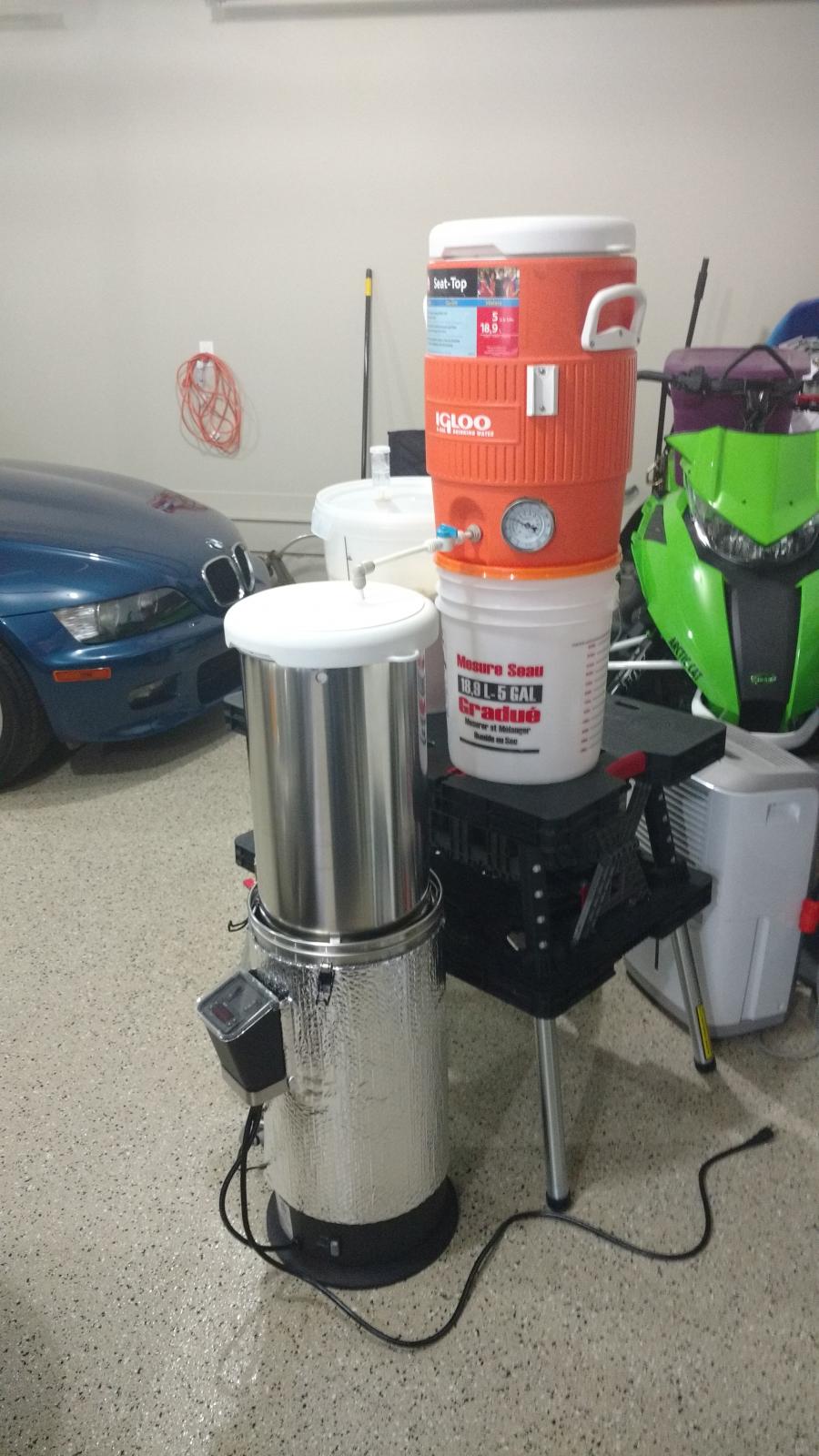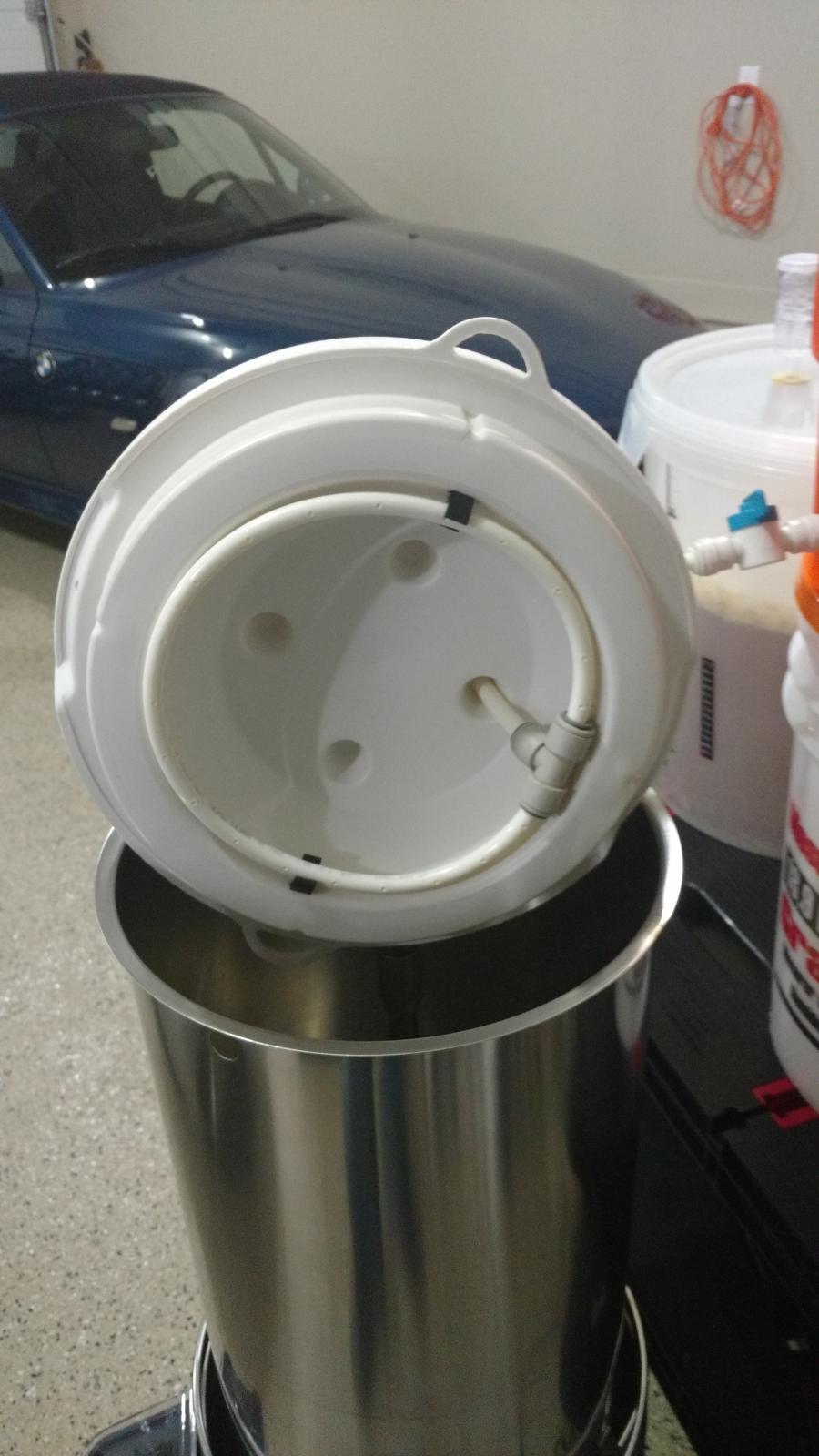Great discussion here guys, I'm glad I logged in now to read the past 3 new pages of posts!
My view on recirc (beyond the obvious of step mashing) is the intention is to clarify the wort with the challenge of maintaining the temp. I was very close on building a RIMS for my cooler tun prior to deciding on the GF with the same intentions / challenge. As for the GF, I originally was fine with overflow, due to the GF video, but have changed since then. I stay around for the mash and adjust flow rate to avoid overflow, as I want to reduce grains in the boiler (my hangup). I also thought this would keep a more consistent grain bed process and thus temp (more on that later). I figure if I let 'er rip (as I originally did) that the potential for overflow recirc to the boiler, easier path, "might" make the mash run-thru less efficient. I have no proof, just my gut feel, seems right for me. If wide open, I do think it settles out and doesn't overrun over time, but ime, its a good 1/2 hr??, ymmv. Wort is clear. Then there's this. During my recent yellow water batch I just made with corn meal (I didn't cereal mash the corn meal) the flow was super slow. I had to monitor the mash pump to avoid the overflow (I fear the flow!), and ended up running it barely open. Not sure if that is best, but it did work reasonably well. While rice hulls would've improved this, could the hulls create channeling? (I have no idea).
As for grain bed temp., I am interested. Measuring could prove difficult during the mash. My temp probe likely won't fit through the plate holes, and if it did no more than ~5" deep. Do you suggest to stop the recirc, pull the lid and then measure? Wort temp on top of plate should equal STC temp since it just came from that neighborhood, so that isn't much value. Seems like a lot, especially if the STC isn't more than a degree or two off, but that's not what I've also read here from some of you (Tang10 esp). Maybe I'll try measuring during my next brew day (about 10 days, sadly, from now) and dig, literally, in to the bed.
On topic of measuring temps, has anyone calibrated their STC? Seems like a good starting point.
I have both hit the mash at mash temp and a bit higher. I think the latter is fine as maybe its better to be a bit low (2-3) than high?? And, if I do again strike higher, I will not go much more than 2-3 F. About 1 C!
As for the brulosophy and the exbeeriments I read and enjoy them, but are these scientific? I'd say not yet. There needs to be replication to validate, and even some tests have indicated slight variable changes, that were not fully controlled. Still, these are great discussion points, and I am glad these take place and can read and ponder upon my own brewing dogma. Keeps advancing our hobby!
I'm enjoying the discussion here on this. Its quite a reasonable point to consider, we all bought the GF and most of us likely hoped that we could maintain consistency, as well as brew great beer!, and this is what I think the essence of this discussion is about.
As for the 15A, I hope its working. As the NE weather is improving (70 next week??!!) I would like to brew on the deck, and I have a 15A outlet there w/GFCI that I installed for landscape lighting last year (need to check what else might be on the circuit) so would like to use this outlet instead of adding a 20A outside (alternatively I may make a 10' or so 20A extension cord and run from basement outlet).





































![Craft A Brew - Safale S-04 Dry Yeast - Fermentis - English Ale Dry Yeast - For English and American Ales and Hard Apple Ciders - Ingredients for Home Brewing - Beer Making Supplies - [1 Pack]](https://m.media-amazon.com/images/I/41fVGNh6JfL._SL500_.jpg)











